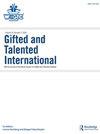Real engagement in active problem solving for Māori boys: A case study in a New Zealand secondary school
Q3 Social Sciences
引用次数: 7
Abstract
ABSTRACT The REAPS model is a teaching and learning model that places students in real-world problem solving, engaging students in active learning. The Ruamano Project was funded by the Teacher Led Innovation Fund, a New Zealand Ministry of Education initiative that supports teams of teachers to develop innovative practices for improving learning outcomes. This article reports on the implementation of REAPS with the Year 9 science students who investigated solutions for a local waterway. The case study involved approximately 90 students, their teachers, and the local community in a decile 3 (low socioeconomic) co-educational secondary school in a rural region of New Zealand. The study shows that the REAPS model can be implemented in the New Zealand context, but requires professional learning and support for teachers. The case study provides evidence that the differentiation principles, when applied to all learners, may increase engagement and identify potential.Māori男生积极解决问题的真正参与:新西兰中学案例研究
REAPS模式是一个教学和学习模式,让学生在现实世界中解决问题,让学生积极学习。Ruamano项目由教师主导创新基金资助,该基金是新西兰教育部的一项倡议,旨在支持教师团队开发创新实践,以改善学习成果。本文报告了九年级理科学生对当地水道解决方案的实施情况。该案例研究涉及新西兰农村地区一所十分位数(低社会经济水平)的男女合校中学的大约90名学生、他们的老师和当地社区。研究表明,REAPS模式可以在新西兰实施,但需要教师的专业学习和支持。案例研究提供的证据表明,当将差异化原则应用于所有学习者时,可能会增加参与度并识别潜力。
本文章由计算机程序翻译,如有差异,请以英文原文为准。
求助全文
约1分钟内获得全文
求助全文

 求助内容:
求助内容: 应助结果提醒方式:
应助结果提醒方式:


